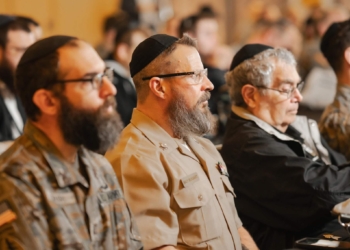In order to see where military spouses rank politically, it is important to examine where spouse advocacy is financially, politically and socially.
In a highly-politicized world, it is easy to shy away from taking an active role in partisan politics. Military spouses are an especially vulnerable demographic. From day one, active duty spouses are taught to avoid engaging in politics while in their military member serves. This has led many to take a step back from the political process, relying on outside entities to advocate on their behalf.
Advocacy can be looked at as an underrated catalyst of change. Sometimes it starts small, with local communities raising their voices towards a common goal. There is not one person who lights the flame, but many. When support is broken down, people must look at attention given, actions taken and dollars spent in order to understand military spouse advocacy.
Nonprofits

Just as there are countless military service organizations, there are countless groups fighting for military-related causes in Washington. Blue Star Families, the USO and others advocate by conducting surveys or providing resources to elected officials, service members and their families. Among them is the Military Family Advisory Network, a well-known resource for many policy makers.
Rather than proactively promoting an agenda, MFAN focuses on “educating those in decision making roles about real, authentic experiences of military families through providing scientific research,” said MFAN Executive Director Shannon Razsadin.
The 501 (c)(3) recruits a diverse advisory board that mirrors the military spouse community. Board members serve a two-year term and connect the organization to military spouse communities across the country. MFAN disseminates information from the Department of Defense to the military community, while keeping its finger on the pulse of military community contentment.
When discontent builds, organizations, like the National Military Family Association, step in.
“We spend a fair amount of time helping families get help from their chain of command. [If] there is not a solution under current policy, we need to address that in a broader fashion. Not everything has to go to Congress,” said Joyce Raezer, retired executive director of NMFA.
“We try whenever possible to solve a problem at the appropriate level, but we are not shy about going to their boss, whoever that is, when action doesn’t happen at the level it is supposed to,” Raezer continued.
When NMFA sees successes at the command or federal level, their advocacy work is not over.
“We then press whoever is responsible to implement that law,” Raezer emphasized. This includes military leaders as well as elected officials.
If it’s broke, let’s fix it.
Perhaps the most familiar form of advocacy is legislative. This process requires political support.
Sen. Tim Kaine of Virginia is considered by many to be a military spouse advocate. Kaine, also a military parent, cosponsored the Military Spouse Employment Bill of 2018. The majority of the bill was passed as part of the 2019 National Defense Authorization Act in August 2018, just over six months after it was introduced to the Senate, a rare occurrence in Washington.
“I’m happy to report that these have not been partisan issues,” said Sarah Peck, Kaine’s communications director. “In such a supercharged partisan time, one word of encouragement is that people on both sides of the aisle want to help find solutions.”
In other words, Washington politicians want to be perceived as supporting military issues, allowing for cooperative and timely decision-making.
It can be intimidating to connect to political representatives. This hesitancy is exacerbated when people are unsure if they should call representatives from their home of record, where they are a resident or where they are currently stationed. Peck encourages plugging-in to local communities in addition to where people are registered to vote. Even if someone is not a constituent, their military issues affect the local community and are worth hearing.
Show us the money.

In 2019, the federal government budgeted $100 million dollars for military spouse employment. This represents .01% of the $686.1 billion DOD 2019 budget.
Military spouse employment appeared as its own line item in 2010 DOD budget, the same time that the My Career Advancement Account program was relaunched with adjusted eligibility requirements. While getting a named budget line item is significant, the total dollar amount is less so.
The federal budget has not increased military spouse education spending for nine years. In 2010, 1.4% of total spending was allocated, setting aside $100 million out of $708.2 billion. With inflation, these numbers have not just stagnated, but decreased. In order to keep up with an average inflation of 2% per year, this budget amount would need to be closer to $119.51 million to break even.
Section 574 of the 2019 National Defense Authorization Act that was passed in August 2018, required the DOD to study the efficiency of the money spent on MYCAA within 180 days. Findings have yet to be reported. Being included in the budget and legislation is important, but effective spending and implementation is vital.
As more and more military family issues are brought to light, now is the time for military spouses to step up and take action. Finances are flowing. Advocacy organizations are researching. Politicians are listening. Change starts with one small step in the right direction.







































